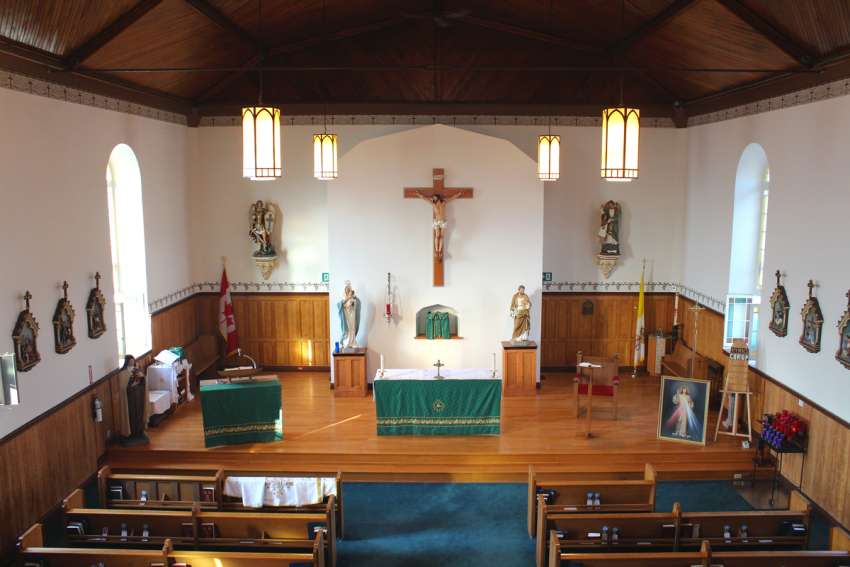St. Michael’s Parish Corkery in Carp, Ont., west of Ottawa, is commemorating its 200th anniversary with a commemorative Mass on Sept. 29 celebrated by Ottawa-Cornwall Archbishop Marcel Damphousse
The parish has not only stood the test of two centuries, surviving a fire, fluctuating parish membership and financial hardships. Fr. Matthew Chojna, the pastor at St. Michael’s for the last seven years, is proud of how far the small country church has come.
“Before the Ottawa diocese joined with Cornwall and became the Ottawa-Cornwall diocese, we were the second-oldest parish in the diocese. For us, that was a point of local pride. It means something to have lasted that long,” he said.
The story of St. Michael’s is deeply entrenched with the history of Irish emigration in Canada throughout the early to mid-1800s. In 1824, Irish settlers from Cork arrived in Huntley Township — what is now modern-day Carp — seeking better economic prospects. It was the faithful devotion of these early pioneers that ultimately led to the foundation of St. Michael’s Corkery Parish.
Isabell Meehan, a parishioner at St. Michael’s for 65 years, explains the deep connection between today's parish and its founding Irish forefathers.
“The present church was built from proceeds of the sale of cattle. These animals were herded to the railroad at Carp and they were shipped to market for sale and the proceeds were given to the parish to help cover the cost of the building of the present-day St. Michael's. St. Michael's stands as a monument to our ancestors’ hard work,” said Meehan, who has been a lector at the parish for 25 years.
Before the physical church was built, Mass was celebrated in the homes of Manions, Kennedys and Meehans — the Irish families among the first to settle in Huntley Township.
A church in the Huntley Township area can be traced as far back as 1837. St. Michael’s was first erected as a log parish but was destroyed by a fire. The church was later reconstructed and dedicated to St. Michael in 1865 under Fr. Edward Vaughan, the parish’s first resident priest. St. Michael’s underwent several construction projects throughout the years, including erecting a bell tower and building a brick rectory.
The parish’s population has fluctuated with periods of economic growth and wartime decline. However, through it all, generational families have retained a strong presence.
Connie Wright, whose maiden name is Meehan, is a direct descendant of the early Irish immigrants from Cork who established St. Michael’s. Her family has been heavily involved in the parish for centuries — with photographic historical evidence to prove it.
“There were pictures of my grandfather in the 100th-year anniversary book. It says that my grandfather was on the committee responsible for planning the 100th anniversary of the parish. He was the officer of entertainment for the anniversary celebrations taking place ... in 1924,” said Wright, who has been attending St. Michael’s since she was a child.
Meehan and her husband Richard — who like Wright is another direct descendant of the original Meehan clan — say that St. Michael’s has been a part of their family life for decades.
“I am not originally from this parish, I am originally from Barry’s Bay. I got a teaching job from the one-room school here in town, and that was the story of our lives. I can honestly say that we have never missed a weekend Mass on any Sunday that we were here,” said the 82-year-old parishioner.
For Wright, just sitting in the church’s pews for Sunday Mass is an experience that transcends time.
“It means a lot. Sometimes, I think I can’t believe I am here. As I sit there, I like to think what it would have been like 100 years ago or what it was like when the original settlers were there. Here I am 200 years after they built the church, and I am able to be there,” she said.
In honour of the parish’s milestone anniversary, renovations have been undertaken to connect the present with the past. Stencilling, which had decorated the original church, was restored. Statuary, which had also been an original element to the parish, was raised on the church walls once more.
“We want to resource the beauty that was to harmonise the present with some of the past so that the church kind of keeps its original feel of what the original settlers envisioned,” said Chojna.


